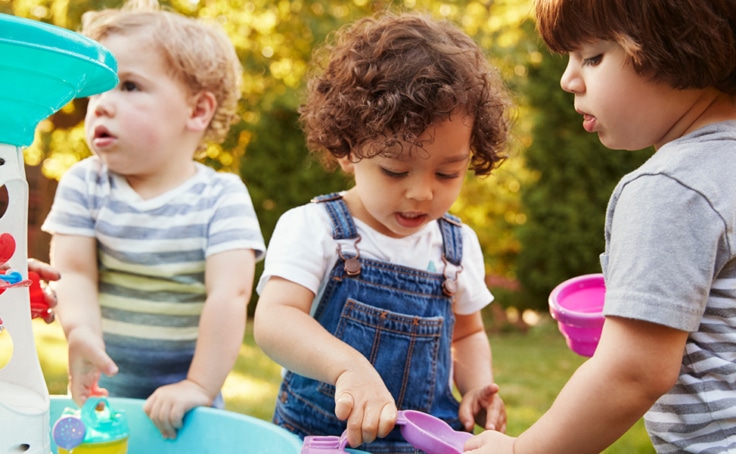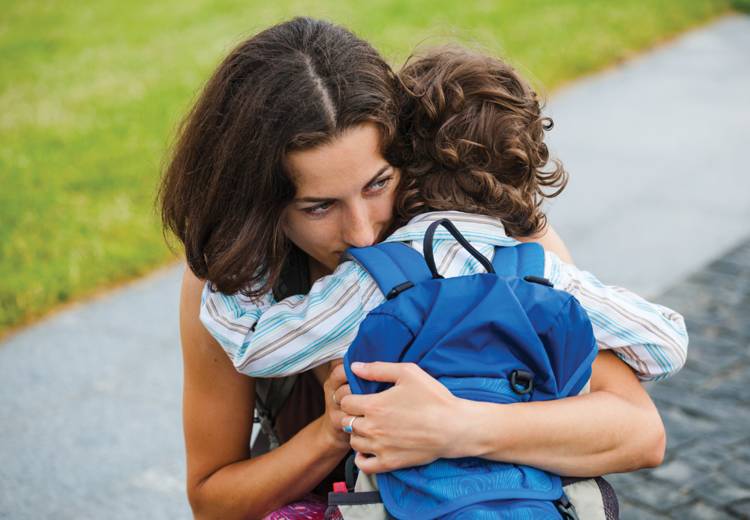How to Foster Resilience in Infants and Toddlers: A Guide for Educators and Caregivers

Resilience is the ability to withstand, adapt to, and recover from adversity or stress. It is a crucial lifelong skill.
Research shows that resilient people tend to manage stress better and maintain a more positive outlook. While anyone can build resilience, it starts with everyday interactions between young children and their caregivers.
Fostering reslience in infants and toddlers lays the foundation for lifelong mental health and helps them handle challenges as they grow. Resilience isn’t just for big or traumatic events; it also supports frustration tolerance and helps children manage everyday ups and downs, like waiting their turn or trying something new.
The importance of fostering resilience in early childhood
Early experiences can make a lasting impact on a child's life.
That’s because a child’s brain rapidly develops from birth to age three, making it highly susceptible to the effects of negative and positive experiences.
For example, by the time a child is two years old, the brain architecture that influences later learning has already been almost entirely formed. Even a single adverse experience can greatly impact brain development at this age, potentially having long-term effects on mental health, behavior, and well-being.
The good news is that parents, caregivers and educators can mitigate the effects of stressors on children through responsive caregiving and resilience-building strategies.

Actionable steps for building resilience in toddlers and infants
Helping young children begin to develop resilience is really all about responsive caregiving. Here are some tips and strategies to try.
Promote secure attachments
Secure attachment and resilience go hand in hand. While we hear this term a lot, let’s break it down: an attachment is “secure” when a child trusts that their basic needs will be met in a timely, consistent way. Over time, the baby comes to trust the consistently safe, nurturing, and responsive relationship they have developed with their parent(s) and early educator(s).
Secure attachment is key to helping a child develop self-regulation and a positive self-perception. These skills — together with supportive, nurturing relationships — help a child be resilient in the face of difficult situations.
Parents and child care professionals can promote a secure attachment with children by:
- Promptly and consistently responding to a child’s needs, which fosters a sense of safety and nurturance
- Showing the child affection through smiling, laughter and touch
- Creating a safe and supportive home and learning environment
- Acknowledging children’s feelings and helping them express emotions in a healthy way
- Creating a consistent and predictable sleeping, eating, and play routine
Support emotional regulation
Emotional regulation means recognizing, understanding and managing feelings in a way that helps us respond appropriately to different situations.
Emotional regulation is a skill that develops over time and often becomes easier with age, but its foundations are built in early childhood. Research shows that the ability to manage emotions later in life, especially in tough situations, can be traced back to early development during the first three years.
Caregivers can start nurturing emotional regulation for infants and toddlers through practicing co-regulation during everyday routines and experiences that children encounter.
Here are some strategies to help with teaching emotional regulation skills:
When a child is upset, start by letting them know it’s okay to feel that way. Then, try putting words to what they might be feeling. For example, if they’re angry because they can’t play with a toy, you could say, “You’re really mad you can’t have the toy right now. That’s hard.” Naming the feeling helps a child begin to make sense of their emotions, even if they can’t say the words yet. This is an early step toward learning how to manage their feelings.
When a child is upset, one of the best things you can do is stay close and calm. Sit next to them, offer a hug if they want one, or suggest taking deep breaths together. Even if they’re crying or yelling, your calm presence shows them they’re not alone with those big feelings. Being with them through the hard moment helps them learn that big feelings can pass, and that they’re safe.
Once the child is calm, you can gently guide them. Use simple words to help them understand what happened. For example, “It’s okay to feel mad, but hitting hurts.” At this age, the goal isn’t reasoning. The goal is helping them connect feelings with actions and learn what’s okay and what’s not.
If the child doesn’t calm down, remove them from the stressful situation, continue to comfort them, and try to redirect their attention. For example, you could say, “Hey, is that a garbage truck I see out the window? Wow, it is so big and rumbling down the street! Do you want to see?”.
When a child handles a tough moment in a positive way, like using words to label their feelings or showing kindness, let them know you noticed. These little moments of praise show them their efforts matter and encourage them to keep practicing.
Mindfulness can support healthy adult-child relationships.
Foster critical thinking and problem-solving skills
Critical thinking and problem-solving skills allow children to navigate life’s challenges and bounce back from disappointments.
There are many ways to help infants and toddlers build critical thinking and problem-solving skills, such as:
Let the child touch, smell, and listen to new things. If they’re playing with a bucket of water, notice and talk about what they’re doing: “You’re splashing! The water feels cold!” Showing interest in their curiosity helps them feel confident to keep exploring.
Try activities like stacking blocks, shape sorters, or lifting flaps in books. You can say, “Hmm, where does this piece go?” or “Let’s try a different one!” These small challenges help build their thinking skills in fun, hands-on ways.
Watch to see how the child responds and what steps they take to solve the problem on their own (including asking your for help with a gaze, gestures or even language!). If you see signs of overwhelm, offer a new tool, an idea, or support if needed to help them figure it out.
Access IECMHC services
Helping a young child develop resilience requires understanding what they need emotionally, physically, cognitively, and socially. Since infants and toddlers have not yet developed the communication skills to express their needs clearly, determining how to best support their growth can be challenging.
For children who have been exposed to trauma or display symptoms of mental health issues, parents or child care professionals may consider Infant and Early Childhood Mental Health Consultation (IECMHC) for support. IECMHC services are delivered by mental health clinicians with the training required to assess, diagnose, and treat problems in young children. These highly skilled clinicians deeply understand child development, child and adult mental health, and the relationships between caregivers and children. They equip caregiving adults with the skills needed to support early childhood emotional development and work with caregivers in a variety of settings.
You can find individuals who identify as infant and early childhood mental health consultants through this interactive map.

What is gentle parenting?

